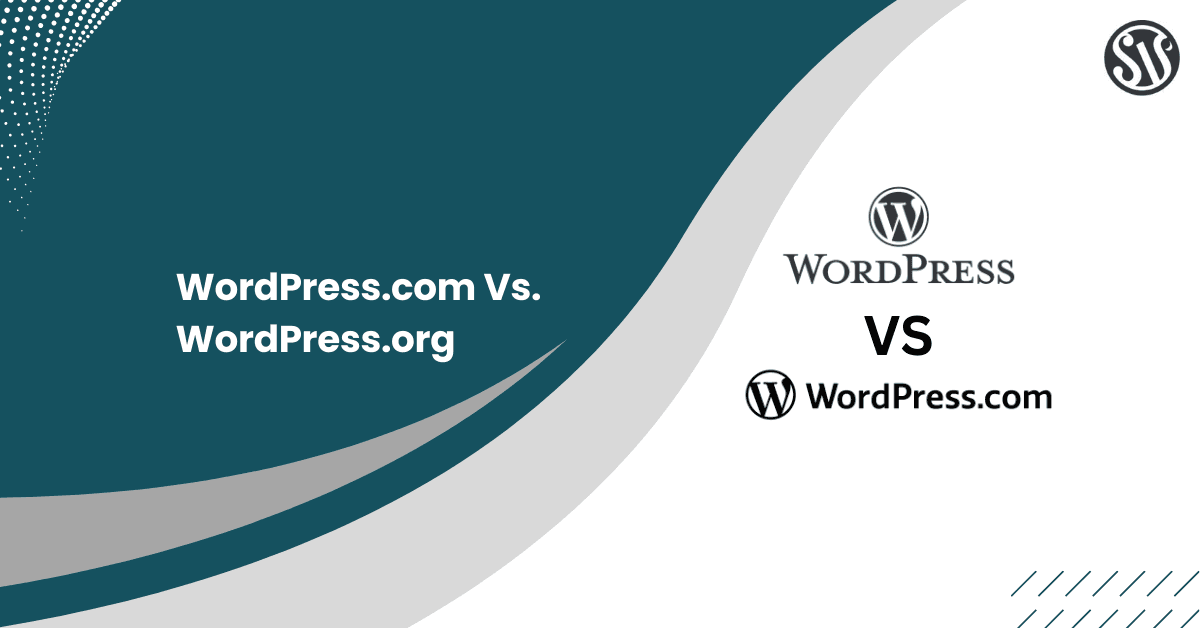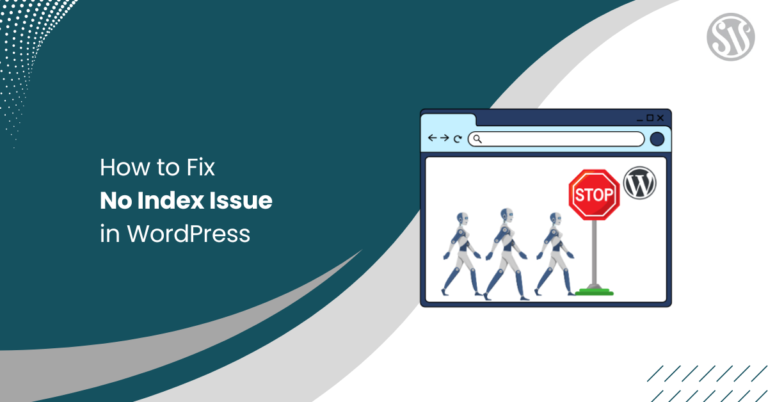WordPress.com vs. WordPress.org: Key Differences
WordPress is one of the most popular platforms for building websites, powering millions worldwide. It offers two distinct versions: WordPress.com and WordPress.org.
While they share the same foundational software, their functionalities, hosting requirements, and customization options differ significantly. This article compares WordPress.com and WordPress.org to assist users in determining which platform best suits their needs.
What is WordPress
WordPress is a powerful tool that makes creating websites easy. It’s a CMS that allows users to build and manage websites without needing to code. As of 2025, WordPress powers approximately 43.6% of all websites.
Two Versions of WordPress: WordPress.com vs. WordPress.org
There are two versions of WordPress: WordPress.com and WordPress.org. Understanding their differences is crucial for choosing the right platform.
- WordPress.com: WordPress.com is a hosted platform managed by Automattic. It offers a range of plans, including free and paid options. With WordPress.com, hosting and maintenance are handled for you, making it user-friendly for beginners.
- WordPress.org: WordPress.org is a self-hosted platform. This means you need to arrange your own hosting and domain name. It provides complete control over your website, allowing extensive customization through various themes and plugins.
What is WordPress.com
WordPress.com is a web-building platform for self-publishing that is popular for blogging and other works. It is owned and operated by Automattic, Inc. Here, you do not have to set up anything; after you purchase a plan, you can set it up as you go.
Pricing Plans
WordPress.com offers various pricing plans to cater to different user needs:
- Personal Plan: Includes a custom domain, removes ads, and offers 6 GB of storage. Priced at $4 per month when billed annually.
- Premium Plan: This plan adds advanced design tools, CSS editing, and 13 GB of storage. It is priced at $8 per month when billed annually.
- Business Plan: Provides access to plugins and advanced SEO tools, starting with 200 GB of storage. When billed annually, it is priced at $25 per month.
- Commerce Plan: Offers full online store capabilities with premium features. Pricing starts at $45 per month when billed annually.
- Enterprise Plan: Scalable and flexible pricing starting at $25,000 yearly.
What is WordPress.org
WordPress.org is a self-hosted platform that allows users to create and manage websites independently. Unlike WordPress.com, it requires users to obtain their own hosting services and domain names. This setup provides complete control over website customization and functionality.
Key Features of WordPress.org
- Self-Hosting and Domain Requirements: To use WordPress.org, you must purchase a domain name and select a hosting provider. This approach offers flexibility in choosing services that match your specific needs. However, it also means you’re responsible for managing these services.
- Complete Website Control: With WordPress.org, you can access your website’s code and files. This level of control allows for extensive customization, enabling you to modify site elements to suit your preferences.
- Extensive Themes and Plugins: The platform offers access to thousands of free and premium themes and plugins. These tools enhance your site’s appearance and functionality, allowing you to add features like contact forms, SEO tools, and e-commerce capabilities.
- Ideal for Advanced Users: WordPress.org best suits businesses, developers, and individuals seeking complete flexibility. It requires a certain level of technical knowledge to manage hosting, perform updates, and ensure security.
Key Differences: WordPress.com vs. WordPress.org
Choosing between WordPress.com and WordPress.org depends on hosting, customization, functionality, and control. Understanding these differences helps users select the right platform for their needs.
Hosting & Control
- WordPress.com: This platform provides managed hosting, meaning all technical aspects, including server maintenance, security, and updates, are handled by WordPress.com. However, this also means limited control over the website.
- WordPress.org: Unlike WordPress.com, WordPress.org requires users to purchase their hosting and domain name. This self-hosted solution gives complete control over the website, allowing users to modify files, adjust server settings, and optimize site performance.
Customization & Themes
- WordPress.com: The platform offers a selection of free and premium themes, but customization options depend on the pricing plan. Users can only change essential design elements on the free and lower-tier plans.
- WordPress.org: Users can access thousands of free and premium themes and upload custom designs. WordPress.org allows full customization, including modifying theme code, using third-party builders, and creating custom templates.
Ease of Use & Maintenance
- WordPress.com: This platform is beginner-friendly because it handles hosting, updates, security, and backups automatically. Users do not need technical knowledge to set up or manage their sites. However, the downside is that customization and control are limited.
- WordPress.org: While it offers more flexibility, users must handle hosting, updates, backups, and security manually. However, many hosting providers offer one-click installations, automatic updates, and managed hosting services to simplify the process.
Security & Backups
- WordPress.com: Security is fully managed, meaning WordPress.com handles malware protection, updates, and backups. This reduces risk, but users have limited control over security settings.
- WordPress.org: Security and backups are the user’s responsibility, but free and premium security plugins protect the site. Many hosting providers also offer automatic backups and firewalls to enhance protection.
Pricing & Costs
- WordPress.com: Paid plans range from $4 to $45 monthly, and higher levels unlock more features.
- WordPress.org: The platform itself is free, but users need to pay for hosting, a domain name, themes, and plugins. Hosting typically costs between $3 and $15 per month, and additional expenses depend on premium themes and plugins.
Pros and Cons: WordPress.com vs. WordPress.org
When choosing between WordPress.com and WordPress.org, weighing their advantages and disadvantages is essential. The following table provides a clear comparison to assist in your decision-making process.
Pros and Cons of WordPress.com and WordPress.org
| Aspect | WordPress.com | WordPress.org |
| Pros | Beginner-FriendlyNo Hosting or Maintenance Needed Automatic Security and Updates | Full Control Over Website Access to Thousands of Plugins and Themes No Restrictions on Monetization |
| Cons | Limited Control and Customization Limited Premium Themes and Plugins | Requires Hosting and Setup Needs Manual Updates and Maintenance More Responsibility for Security |
Which One Should You Choose: WordPress.com vs. WordPress.org
Selecting between WordPress.com and WordPress.org depends on your specific needs, technical expertise, and long-term goals. Here’s a concise guide to help you make an informed decision.
Choose WordPress.com
- Beginner Seeking Simplicity: If you’re new to website creation and desire an easy-to-use platform, WordPress.com is ideal. It offers a straightforward setup process, allowing you to focus on content without worrying about technical details.
- Managed Hosting and Maintenance: WordPress.com handles hosting, security, and updates for you. This managed approach means you don’t need to purchase separate hosting services or manage server configurations.
- Limited Customization: If you’re comfortable with basic customization options and don’t require extensive design changes, WordPress.com suffices. While higher-tier plans offer more customization, the platform is best for users who don’t need complete design freedom.
Choose WordPress.org
- Full Control Over Your Website: For those seeking complete ownership and control, WordPress.org is the better choice. It allows you to modify code, access all files, and tailor your site to your specifications.
- Planning to Run Business: WordPress.org supports advanced e-commerce, business, or membership site functionalities. Access to a vast array of plugins and themes allows you to implement features like shopping carts, payment gateways, and membership management systems.
- Advanced Features: If you require advanced features, detailed SEO optimization, and extensive customization, WordPress.org excels. It provides access to powerful SEO plugins, custom themes, and the ability to edit underlying code.
How to Get Started with Each Option
Embarking on your website creation journey involves choosing between WordPress.com and WordPress.org. Each platform offers distinct pathways to set up your site. Here’s a step-by-step guide for both.
Starting with WordPress.com
To start using WordPress.com, follow the given steps:
Sign Up at WordPress.com
Visit WordPress.com and click the “Get started” or “Log in” button. Then, provide an email or sign up using one of the various options. This process is straightforward and user-friendly.
Choose a Plan
After signing up, select a plan that aligns with your needs. Various plans offer enhanced customization and functionality.
Select a Theme and Customize
Once your plan is set, choose a theme that reflects your site’s purpose and aesthetic. Navigate to the dashboard, select “Appearance,” then “Themes,” and browse the available options.
After choosing a theme, use the customization tools to adjust layouts, colors, and fonts to your preference.
Starting with WordPress.org
To start using WordPress.org, follow the below-given steps:
Choose a Hosting Provider
Begin by selecting a reputable hosting provider, such as Bluehost or SiteGround. These providers offer reliable services that are compatible with WordPress. Sign up for a hosting plan that suits your anticipated website traffic and storage needs.
Install WordPress
After securing hosting, install WordPress. Many hosting providers offer one-click installations through their dashboards. Locate the WordPress installation option, follow the prompts, and set up your administrative credentials.
Select a Theme and Install Plugins
With WordPress installed, choose a theme that aligns with your site’s goals. Navigate to the “Appearance” section in the dashboard, select “Themes,” and explore the available options. After activating theme, install plugins to enhance your site’s functionality.
Popular plugins include SEO tools, security features, and contact forms.
Set Up SEO and Security Plugins
Install an SEO plugin like Yoast SEO to optimize your site for search engines. Consider plugins such as Wordfence Security for security. These tools help protect your site and improve its visibility online.
Conclusion: WordPress.com vs. WordPress.org
WordPress.com and WordPress.org provide robust website-building solutions catering to different user needs. WordPress.com is a fully managed platform ideal for beginners who want a hassle-free experience without dealing with hosting, security, or maintenance.
On the other hand, WordPress.org is a self-hosted solution that gives users full control over their websites. It allows for complete customization, access to thousands of plugins and themes, and unrestricted monetization.
Comparing WordPress.com vs. WordPress.org depends on your technical skills, budget, and website goals. If you need an easy-to-use, low-maintenance platform, WordPress.com is the better choice. If you want complete creative and functional freedom, WordPress.org is the right option.







